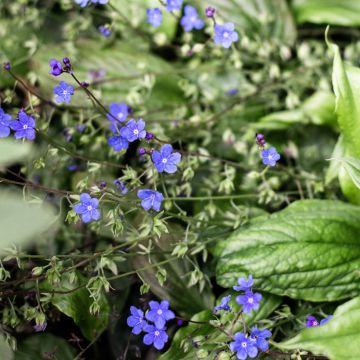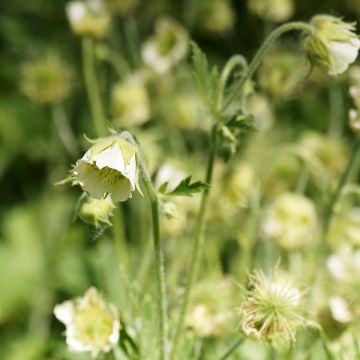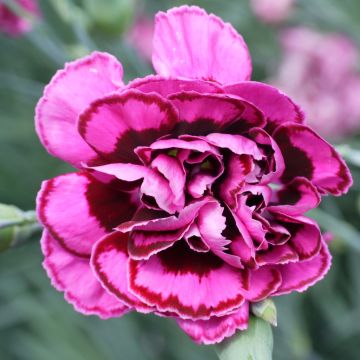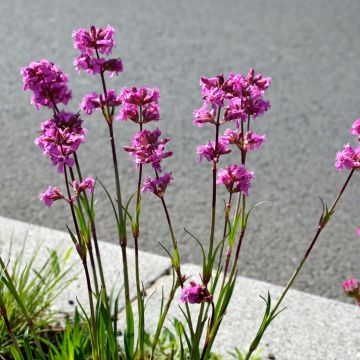

Omphalodes verna Alba
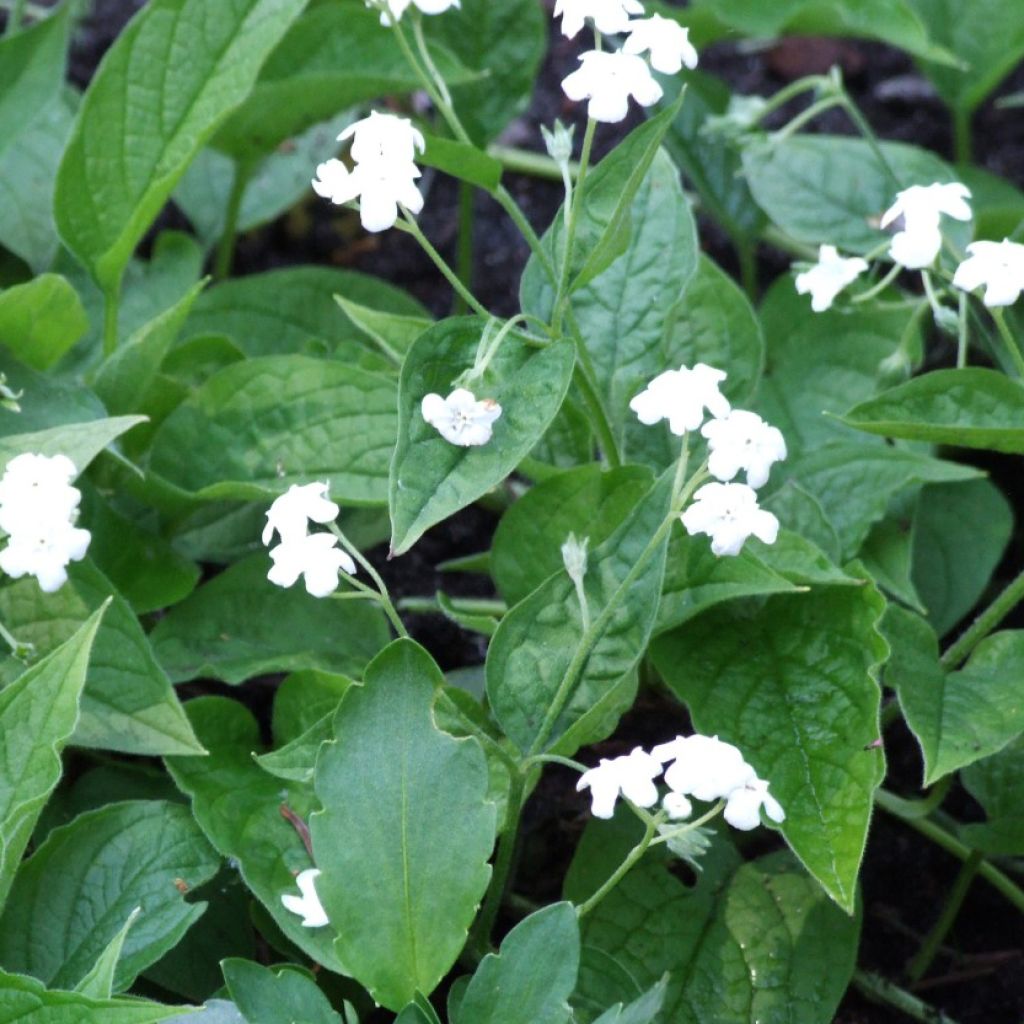

Omphalodes verna Alba
Omphalodes verna Alba
Omphalodes verna Alba
Spring Navelwort, Creeping Navelwort, Blue-eyed Mary
Two out of three plants dead. The third one is not in great shape but slowly coming back to life. I am very disappointed.
Laetitia , 05/06/2024
Special offer!
Receive a €20 voucher for any order over €90 (excluding delivery costs, credit notes, and plastic-free options)!
1- Add your favorite plants to your cart.
2- Once you have reached €90, confirm your order (you can even choose the delivery date!).
3- As soon as your order is shipped, you will receive an email containing your voucher code, valid for 3 months (90 days).
Your voucher is unique and can only be used once, for any order with a minimum value of €20, excluding delivery costs.
Can be combined with other current offers, non-divisible and non-refundable.
Home or relay delivery (depending on size and destination)
Schedule delivery date,
and select date in basket
This plant carries a 12 months recovery warranty
More information
We guarantee the quality of our plants for a full growing cycle, and will replace at our expense any plant that fails to recover under normal climatic and planting conditions.

Would this plant suit my garden?
Set up your Plantfit profile →
Description
Omphalodes verna 'Alba', also known as the white navelwort, is a small semi-evergreen perennial that forms a lovely ground cover adorned with a multitude of white flowers. It thrives in shade or partial shade, in moist but well-drained soil. It brings light to the forest understorey in spring.
Omphalodes verna 'Alba' belongs to the Boraginaceae family. It is the white form of this species, native to central Europe. It can be found from Lombardy to Hungary, growing on the edge of forests, in clearings, and along dwellings. A plant will spread about 20cm (8in) in all directions. This Omphalodes has a stoloniferous stump with creeping stems, allowing it to form a beautiful carpet over time. In spring, it produces beautiful heart-shaped, wavy foliage in a vibrant fresh green colour, which is semi-evergreen to deciduous. The leaves measure 10 to 15cm (4 to 6in) long and have a slightly pubescent texture. The pretty flowers, appearing in March-April, strongly resemble those of forget-me-nots. They are pure white, measuring 1cm (0in) in diameter, and are borne on long, flexible pedicels.
Omphalodes verna 'Alba' is a bright ground cover in spring, which should be planted in a light, moist understory with rich humus. Plant it in partial shade alongside wood anemones, Geranium nodosum, and bluebells amidst clumps of barrenworts.
Report an error about the product description
Omphalodes verna Alba in pictures
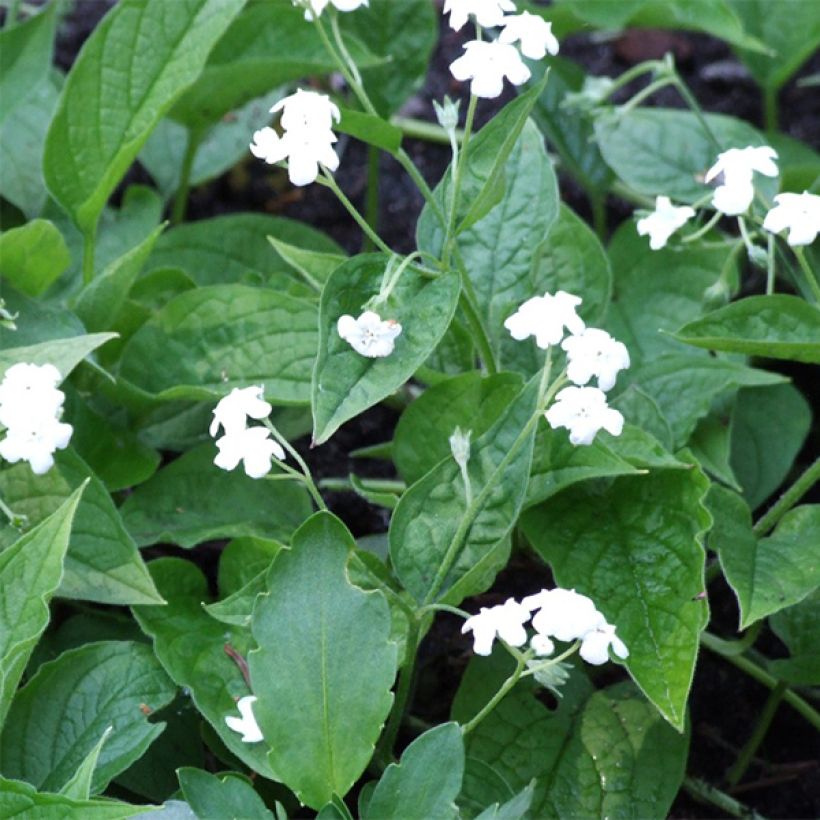

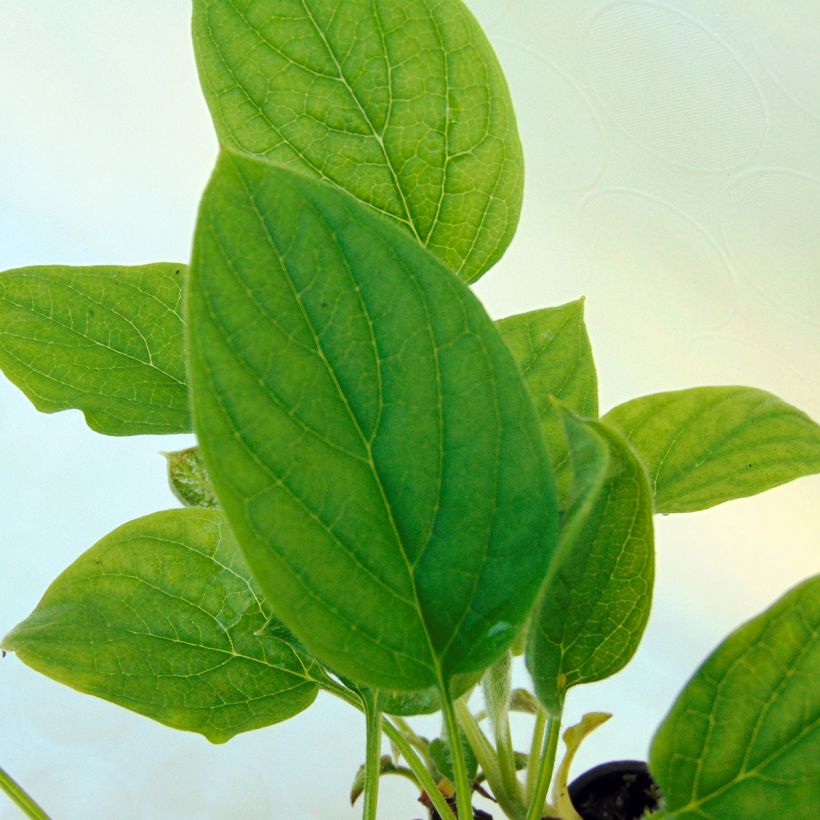

Flowering
Foliage
Plant habit
Botanical data
Omphalodes
verna
Alba
Boraginaceae
Spring Navelwort, Creeping Navelwort, Blue-eyed Mary
Central Europe
Other Omphalode
View all →Planting and care
Omphalodes verna 'Alba' is an excellent perennial plant, very cold-resistant, and easy to grow in any moist soil, even very clayey and wet. We have planted it in the rockery, in a rather dry, slightly chalky soil, along with forget-me-nots and Sedum; then in a heavy, clayey and acidic soil, in a completely shaded area, accompanied by lungworts and daffodils. They seem to adapt perfectly to these two radically opposite situations and thrive there without any particular care. However, it is necessary to watch out for attacks from gastropods in humid weather, as they are quite fond of its beautiful foliage.
Planting period
Intended location
Care
-
, onOrder confirmed
Reply from on Promesse de fleurs
Similar products
Haven't found what you were looking for?
Hardiness is the lowest winter temperature a plant can endure without suffering serious damage or even dying. However, hardiness is affected by location (a sheltered area, such as a patio), protection (winter cover) and soil type (hardiness is improved by well-drained soil).

Photo Sharing Terms & Conditions
In order to encourage gardeners to interact and share their experiences, Promesse de fleurs offers various media enabling content to be uploaded onto its Site - in particular via the ‘Photo sharing’ module.
The User agrees to refrain from:
- Posting any content that is illegal, prejudicial, insulting, racist, inciteful to hatred, revisionist, contrary to public decency, that infringes on privacy or on the privacy rights of third parties, in particular the publicity rights of persons and goods, intellectual property rights, or the right to privacy.
- Submitting content on behalf of a third party;
- Impersonate the identity of a third party and/or publish any personal information about a third party;
In general, the User undertakes to refrain from any unethical behaviour.
All Content (in particular text, comments, files, images, photos, videos, creative works, etc.), which may be subject to property or intellectual property rights, image or other private rights, shall remain the property of the User, subject to the limited rights granted by the terms of the licence granted by Promesse de fleurs as stated below. Users are at liberty to publish or not to publish such Content on the Site, notably via the ‘Photo Sharing’ facility, and accept that this Content shall be made public and freely accessible, notably on the Internet.
Users further acknowledge, undertake to have ,and guarantee that they hold all necessary rights and permissions to publish such material on the Site, in particular with regard to the legislation in force pertaining to any privacy, property, intellectual property, image, or contractual rights, or rights of any other nature. By publishing such Content on the Site, Users acknowledge accepting full liability as publishers of the Content within the meaning of the law, and grant Promesse de fleurs, free of charge, an inclusive, worldwide licence for the said Content for the entire duration of its publication, including all reproduction, representation, up/downloading, displaying, performing, transmission, and storage rights.
Users also grant permission for their name to be linked to the Content and accept that this link may not always be made available.
By engaging in posting material, Users consent to their Content becoming automatically accessible on the Internet, in particular on other sites and/or blogs and/or web pages of the Promesse de fleurs site, including in particular social pages and the Promesse de fleurs catalogue.
Users may secure the removal of entrusted content free of charge by issuing a simple request via our contact form.
The flowering period indicated on our website applies to countries and regions located in USDA zone 8 (France, the United Kingdom, Ireland, the Netherlands, etc.)
It will vary according to where you live:
- In zones 9 to 10 (Italy, Spain, Greece, etc.), flowering will occur about 2 to 4 weeks earlier.
- In zones 6 to 7 (Germany, Poland, Slovenia, and lower mountainous regions), flowering will be delayed by 2 to 3 weeks.
- In zone 5 (Central Europe, Scandinavia), blooming will be delayed by 3 to 5 weeks.
In temperate climates, pruning of spring-flowering shrubs (forsythia, spireas, etc.) should be done just after flowering.
Pruning of summer-flowering shrubs (Indian Lilac, Perovskia, etc.) can be done in winter or spring.
In cold regions as well as with frost-sensitive plants, avoid pruning too early when severe frosts may still occur.
The planting period indicated on our website applies to countries and regions located in USDA zone 8 (France, United Kingdom, Ireland, Netherlands).
It will vary according to where you live:
- In Mediterranean zones (Marseille, Madrid, Milan, etc.), autumn and winter are the best planting periods.
- In continental zones (Strasbourg, Munich, Vienna, etc.), delay planting by 2 to 3 weeks in spring and bring it forward by 2 to 4 weeks in autumn.
- In mountainous regions (the Alps, Pyrenees, Carpathians, etc.), it is best to plant in late spring (May-June) or late summer (August-September).
The harvesting period indicated on our website applies to countries and regions in USDA zone 8 (France, England, Ireland, the Netherlands).
In colder areas (Scandinavia, Poland, Austria...) fruit and vegetable harvests are likely to be delayed by 3-4 weeks.
In warmer areas (Italy, Spain, Greece, etc.), harvesting will probably take place earlier, depending on weather conditions.
The sowing periods indicated on our website apply to countries and regions within USDA Zone 8 (France, UK, Ireland, Netherlands).
In colder areas (Scandinavia, Poland, Austria...), delay any outdoor sowing by 3-4 weeks, or sow under glass.
In warmer climes (Italy, Spain, Greece, etc.), bring outdoor sowing forward by a few weeks.






























